It Started With Aristotle
Beginning with Aristotle, philosophers turned to a study of the natural, physical world. In the thousands of years since then, new detailed disciplines and areas of study have opened up underneath the heading of “natural philosophy”, each bearing fruit in helping us to understand God’s creation and make inventions and technology that wouldn’t have been possible with our previous understanding.
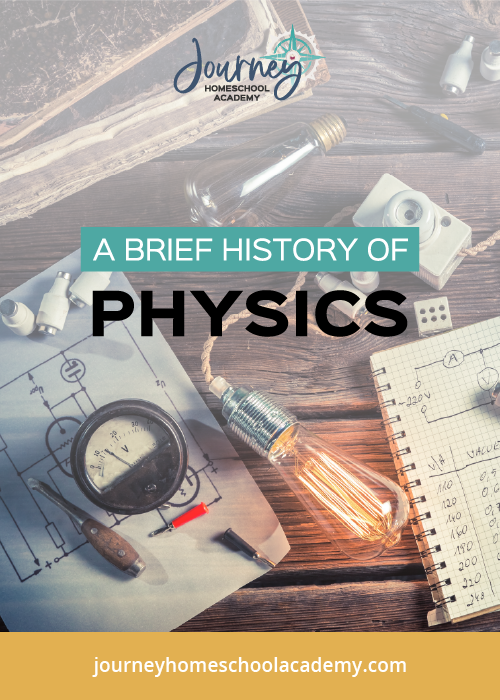
Natural Motion vs. Violent Motion
Aristotle’s most fundamental and far-reaching contribution to what would become physics was through his study of motion and its causes. When it came to causes, Aristotle defined two types of motion: “natural motion” and “violent motion.” Natural motion meant any movement that corresponded to an object’s core nature. For example, heavy objects would have a natural tendency to move toward the ground, whereas lighter objects would have a natural tendency to move up into the sky.
Conversely, violent motion would be the result of any outside influence that prevented or altered the natural motion of an object (lifting a rock off the ground, trapping smoke in a container that kept it from drifting upwards, etc).
He also recognized that these objects moved through fluids (liquids or gasses) that surrounded them. So for example, a rock that had a natural tendency to be on the ground would fall quickly toward the ground if it were falling through the air but would fall more slowly if surrounded by water. He even defined a mathematical relationship, an inverse proportion between the speed of the falling object and the density of the fluid it fell through, that is a good approximation for the mathematical model that we have today.
A final important idea of Aristotle’s concept of violent motion is that the motion could only continue as long as the outside influence (the violence) was present. This was obvious in the case of lifting a rock, but what about throwing a rock sideways? Once the rock leaves the hand, what keeps it moving sideways before it returns to Earth? Aristotle believed this was also an influence of the air (or other fluid) through which the object moved—putting pressure on it and keeping it moving, another example of violent motion.
These fundamental teachings of Aristotle ended up being developed into several different disciplines and subsets of physics:
- Kinematics and dynamics
- Astronomy
- Gravity
Kinematics and Dynamics

When it comes to kinematics and dynamics (the study of motion and its causes), the most important development came around the question of the natural state of an object—yes it has a natural state, and yes outside influences can change that state, but what is that natural state—to be at rest, or to be in motion? Many people after Aristotle wrote about this question, including philosopher Renee Descartes and astronomer Johannes Kepler (more on him later).
However, the question was not settled until a radical new idea from Galileo Galilei in the Renaissance period, was later championed and refined by Isaac Newton. They both taught a measurable property of objects called inertia, which describes the natural state of an object as being not exclusive to motion, nor to rest, but to continuing to do whatever the object was already doing. If an object is at rest, its natural tendency is to remain at rest, but if you manage to get it moving (with an outside influence) then its natural tendency will be to remain in motion—even once the outside influence is removed.
Newton used this concept as the basis for his three laws of motion. This development was such an elegant solution to the debate between motion and rest as the natural state of objects, that it hasn’t needed to be revised in the 400 years since, and it led to changes in thinking about astronomy and gravity as well. However, there have been developments in modern physics thinking about inertia, developing it further rather than challenging or changing it. Albert Einstein revised our views on motion when he won the Nobel Prize for his theory of special relativity (that all motion must be measured relative to the fundamental motion of the universe).
Additionally, the modern focus on inertia is in understanding what gives objects their inertia, since it can be observed that different objects have different tendencies to keep doing what they’re doing (imagine trying to start or stop a large freight ship as compared to starting or stopping a toy car, and you can see the differences can be quite large!). Newton first defined what properties of an object determine its inertia, but fundamental principles behind those properties are now understood in more detail and are the focus of some of the most famous (and expensive) experiments in modern physics.
Inertia’s Double Impact
Parallel to inertia’s impact on the study of kinematics, Galileo and an astronomer named Nikolai Copernicus used this idea to revolutionize the study of astronomy. If objects could stay in steady motion (once they got moving) without needing any further outside influence, that could change all our assumptions about the earth as a frame of reference for looking at the other planets and stars! The entire worldview revolution from geocentric (Earth-centered, the view that the earth is the center of the universe, does not move, and everything else orbits around it) to Heliocentric (sun-centered, the sun is the center of the motion of the planets and stars, including the earth orbiting the sun) depended on inertia.
If the idea of inertia was correct, then every object we observe that appears to be at rest on the surface of the earth (grass, trees, buildings, a parked car, etc.) could just as easily be in steady motion along with the earth. Inertia is what allowed Copernicus and Galileo to propose that the earth could be turning and moving through space. They needed an explanation like this because their observations of the stars and planets showed other planets turning or having objects orbit them (Galileo for example saw the moons of Jupiter orbiting that planet, not orbiting the earth).
Their ideas were difficult to grasp without a healthy understanding of inertia, and were based on new and unusual observations (Galileo developed many of his own more powerful telescopes based on ones used for ships navigation) and so were confusing to many of their time who preferred the simple observation of looking at the earth and seeing it standing still. Mankind’s ideas themselves had great inertia! They tended to remain as they were until great influences altered them.
Deeper Research Into the Solar System

Once this shift in thinking about astronomy had come about as a consequence of the idea of inertia, many other dominos began to fall leading to new concepts of how our solar system (and beyond it, our galaxy and the wider universe) might work. Tycho Brahe was one astronomer who cataloged a huge number of observations, and his student/assistant Johannes Kepler (really a mathematician, but who applied his mathematical talents to Brahe’s astronomical observations) was able to work out three laws of planetary motion that were as groundbreaking as Newton’s three laws of motion. These laws were really just mathematical models, equations that fit the data present in Brahe’s observations, but likewise, they are so well-formed that they enabled a breakthrough in the study of gravity.
The Identification of Black Holes
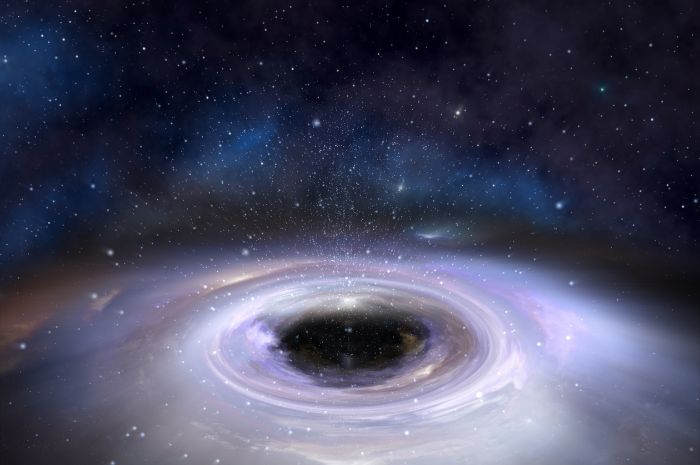
Before we move on to that, however, more on astronomy as it moved from the Classical era into the Modern era: As observations of distant stars at different points in their life cycle gave us a new understanding of how they grow and change, it was determined that the size and mass of the star made a difference in what would happen at the end of a star’s life cycle. A specific calculation by Subrahmanyan Chandrasekhar found that stars above a certain mass could end up collapsing into something called a “black hole,” where its influence is so great that not even light can escape it. Arthur Eddington, a brilliant astronomer who will figure into our discussion of gravity, opposed Chandrasekhar’s calculation because he thought the idea of black holes was absurd, and many other physicists followed suit because of Eddington’s notoriety.
It wasn’t until 50 years later that observations would confirm the existence of black holes. Ironically, Eddington himself would go on to observationally confirm an even more controversial theory in a much shorter time frame (again more in our discussion of gravity). The latest and greatest in the world of astronomy and modern physics involves much about these black holes and understanding gravity, but has also been spurred in a new direction by the discoveries of Vera Rubin who gave us the first idea of the existence of what we now call dark matter—there is material in the universe whose influence we can see, but that we cannot directly observe, and it appears to be quite prevalent.
All this from Galileo taking a ship’s navigational telescope and pointing it toward the stars!
Isaac Newton’s Law of Gravity

Now to the matter of gravity—influenced by the theory of inertia, integral to the study of astronomy, and fundamental to the structure of our universe. At first, gravity was a word that described simply how heavy something was—how difficult to lift, how strongly it wanted to return to the ground. As such it paralleled Aristotle’s earlier idea of “natural state”—heavy things naturally wanted to be on the ground, and that was why they moved there. However, with the advent of Galileo and Newton’s idea of inertia, gravity shifted to the category of the outside influences that might change an object’s natural state. The lifted rock remains at rest but is pulled toward the ground by gravity’s influence.
This shift allowed Newton to do more than just explain why an apple fell on his head (if that story is even true). Newton’s law of gravity explains two major new ideas:
- The invisible influence that pulls the apple towards the earth might be responsible for pulling the moon towards the earth as well, or the earth towards the sun, or indeed attracting all objects towards all other objects.
- This invisible influence between objects depends on the mass and distance between the objects. So, the earth with its ponderous mass attracts you more strongly than any other object that you can see. And though it is less massive than the sun, the earth can still keep you glued down to it because it is much closer.
Newton’s explanation for gravity, and the mathematical model that he developed to go with it, fit perfectly Kepler’s calculations based on Brahe’s astronomical observations. Gravity was the perfect answer to the question of why every planet and moon in our solar system orbits the way that it does. Thus was born the longstanding marriage between gravity and astronomy that stands to this day even though both have greatly changed.
Gravity in Spacetime
Newton’s law of gravity stood for 300 years as the dominant understanding until no less a personage than Albert Einstein himself questioned it in a fundamental way. Rather than masses creating an invisible force that attract other masses, Einstein theorized, masses might warp the fabric of spacetime (a word much borrowed in sci-fi stories, but first pioneered to describe the concept in physics that space is not an empty thing in which objects exist, but space itself has properties, one of which is that it is entangled with time, and these two together make up the basic structure of our physical reality).
If masses warped spacetime, then any other object moving near them would curve in space and speed up or slow down in time. These curves and speed changes exactly match the changes that could be brought about by the invisible force of gravity.
Welcome Back Arthur Eddington
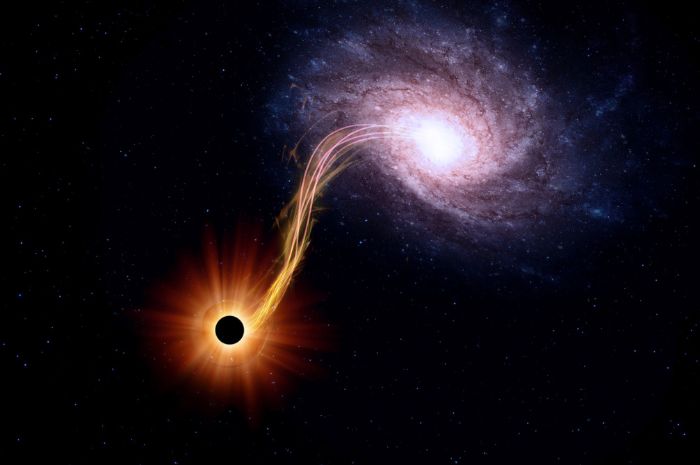
Since Einstein’s theory matched the existing data equally well to Newton’s law of gravity, a new experiment was needed that would rule out one or the other possibility, and this is where Arthur Eddington comes back into the picture. Albert Einstein published four groundbreaking (and therefore controversial) papers in 1905 and followed them up with one more in 1915—this latest one proposing a new theory for gravity. As part of this work, it became clear that Einstein’s theories suggested that light itself, though it had no mass, could be influenced by the curvature of spacetime, whereas Newton’s law would rule out any gravitational influence on light because gravity is an interaction between objects with mass, and light has none.
Eddington performed a bold experiment during an eclipse in 1919 that let him view the apparent positions of stars whose light had passed near the sun and its gravitational effects, and indeed his results agreed with Einstein’s theories and denied Newton’s, and our understanding of gravity changed forever.
Since then, astronomical observations have shown other surprising results in other gravitational phenomena. The above-mentioned dark matter and black holes, difficult or impossible to observe directly, are typically known through their gravitational interactions with the matter around them. Stephen Hawking and Kip Thorne are two later researchers famous for their research into the universal implications of these gravitational results and what they mean for the structure of our universe. There have even been experiments that have measured gravitational waves—ripples in spacetime itself that propagate out from movements and disturbances in space. In this case, it was a collision of two whole galaxies that provided ripples large enough for us to detect!
The Study of Light

Of course, we’ve also referenced another area of physics research related to astronomy and gravity above, and that is the study of light. Early Greek philosophers debated how the sense of sight worked; was light something that was sent out from our eyes to contact the things we observed, or did it come to us from external sources? Once this was understood, then the question became: What was the nature of light itself? What about its source determines the color or brightness of light? Was the warmth that we felt from the sun caused by the same light that we saw from the sun, or was it a separate effect (since so many other light sources seem to involve heat, although in recent decades we’ve developed light bulbs that are cool to the touch)?
Again Isaac Newton provided a breakthrough when his experiments showed that a prism could split a beam of white light into multiple colors; in fact, these multiple colors were already the components of light that we perceived as white! From there, biologists sought to understand the human sense of sight and how it perceived different lights in different ways, but physicists took to studying light itself, which ended up uniting three other long-running threads of classical physics and moving them in surprising ways into the world of modern physics.
Key Threads of the Classical Physics Era
First, the relationship between light and heat was a fruitful part of perhaps the most productive thread of the classical physics era—the study of thermodynamics. Physicists and their thermodynamic discoveries gave rise to steam engines and all sorts of other useful methods of turning thermal energy (heat) into mechanical work, meaning that it was responsible for driving the Industrial Revolution forward through advances in transportation and manufacturing technology.
The primary principles necessary to allow these technological leaps were the proportions between the pressure, volume, and temperature of gases, and the men who discovered them were also founders or important members of the Royal Society (a scientific academy commissioned by King Charles II in 1660). Robert Boyle, whose experiments confirmed that the pressure felt by a gas will increase as the volume of its container decreases, founded the Royal Academy as a major hub for scientific discussion and thought above and beyond what was taking place in the Universities of Renaissance Europe.
It should be noted that (in keeping with our earlier discussion of how scientific knowledge is a seeking after understanding of God’s own works, and unlike the modern perspective that pits religion and science as enemies), Robert Boyle and others in the Society considered Theology to be the “Queen of the Sciences,” and they approached their studies of natural philosophy and religion in parallel and with equal respect.
More Advancements in Thermodynamics
Back to the advancement in thermodynamics! Just as proportions were being discovered between pressure, temperature, and volume (for example, heating a gas will cause it to expand, or to increase in pressure, and this expansion under pressure can be used to drive all sorts of machines—most especially James Watt’s steam engine), Daniel Bernoulli was also codifying proportions between pressure and flow rate that govern hydraulic and pneumatic systems that are still in use everywhere from the brakes in your car to the giant cranes that construct skyscrapers.
Blaise Pascal was instrumental in overturning the Aristotelian concept that “nature abhors a vacuum” by proving that the air all around us weighs on everything, producing pressure, but that by sealing off a container and removing that air, a vacuum can indeed be created (with all the useful suction effects that come from it—actually the result of air pressure forcing material into the empty unpressurized space). Isaac Newton also contributed to thermodynamics, with a law of cooling that discussed the rate at which heat would pass from a hot object into a cold one, cooling down the hotter one.
Thomson’s Law of Conservation of Energy
All these useful practical inventions were indeed important to society’s development, but the theoretical underpinnings were even more significant (though in ways that took centuries to come to light). William Thomson, the 1st Baron Kelvin, was instrumental in unifying these theories into what became the laws of thermodynamics, the first of which is also known as the law of conservation of energy.
Energy (like heat or light) cannot be created nor destroyed, only transferred from place to place or transformed from one kind to another. He also theorized that the workings of heat and thermal energy were closely related to the emerging field of electricity, but more on that in a moment.
With the study of energy conservation came the discovery that heat could be transferred by direct contact, by the flow of heated materials, or through radiation—such as when the sun’s heat radiates out in all directions (along every radius of the sphere around it, hence the name). Again relating the study of light to the study of heat, light radiates through the same empty space and in all directions, but how exactly light and heat can do this would come (again) through understanding electricity.
But before we leave thermodynamics entirely, its equivalence in modern physics once again goes through Albert Einstein, whose most famous equation (E = mc2) comes from his understanding that energy and matter both are part of this conservation. Mass can be transformed into energy, and energy can be captured in the form of mass.
Einstein’s Famous Equation
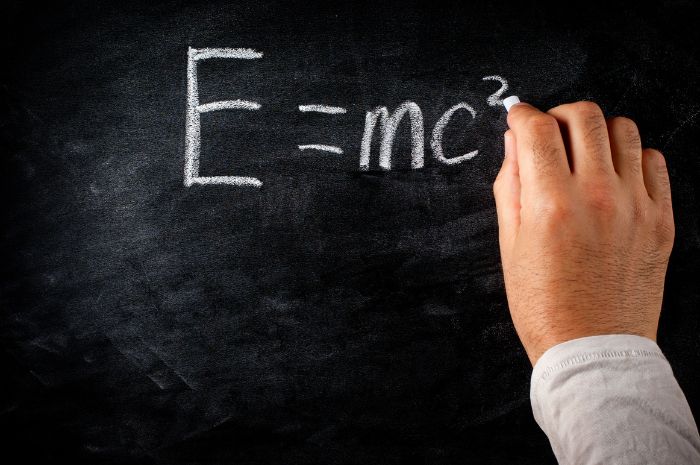
The most obvious outcomes of this discovery were the power available through nuclear fission (which powered early atomic bombs and still powers nuclear power plants across the planet) and nuclear fusion (which powers the sun, the most powerful nuclear bombs, and hopefully one day ever-more efficient power stations). And the “c” in that equation? It represents the speed of light, abbreviated c because of its constancy. How does light relate to converting matter and energy? For the third time, we refer to electricity (and its close cousin magnetism), and so it is time to follow that particular thread from the classical to the modern.
From the Greek word “electrum” for amber, which had interesting properties when rubbed against other materials, discoveries about electricity advanced rapidly during the end of the 1700s and throughout the 1800s, moving quickly as the modern physics era approached. Charles-Augustin de Coulomb found a proportionate force could attract or repel electrically charged objects. In fact, the mathematical model for this force was an exact parallel to Newton’s law of gravity, published 100 years before.
More Influential Inventions
From these forces, again practical inventions were made, such as Alessandro Volta’s “voltaic pile” (precursor to the modern battery) and Georg Ohm’s practical laws for electric circuits that would eventually be developed into modern-day computers. Carl Friedrich Gauss developed a similar mathematical model for the forces of magnets, observed in certain natural materials as well as the large magnetic influence of the earth itself that allowed compasses to navigate north consistently.
A small but pivotal moment in these studies came when Hans Christian Ørsted noticed a compass needle deflecting to point toward a wire that had an electrical current running through it. From this jumping-off point, Michael Faraday developed several important theories about electromagnetic fields—literally force fields (not in the sci-fi sense, but almost), areas of space occupied by the combined influence of electricity and magnetism, in which changing electric currents produce fluctuations in magnetism and changing magnetic fields produce alternating electrical currents.
Implications from Electromagnetic Fields
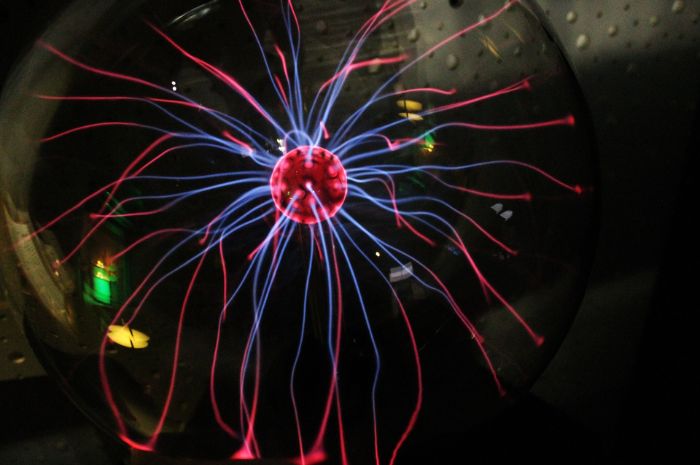
The practical implications of this led to inventions like electric generators and motors (one spins a magnet near a coil of wire to generate a current in it, the other runs a current through a coil of wire to spin a nearby magnet, and anything attached to it).
The theoretical implications were even more profound since it suggested that the fluctuations in electrical and magnetic properties could be similar to the fluctuations in a vibrating string, an undulating body of water, a hummingbird’s wings—any oscillating phenomenon that was known to produce waves. This perspective was made concrete by James Clerk Maxwell who codified all the existing knowledge of classical electricity and magnetism theory into four laws of electromagnetism, which were mathematical models based on waves that elegantly summarized and explained every effect of electricity and magnetism discovered up until that point (and continues to explain and relate to many discoveries made afterward).
These equations were also found to apply equally well to radiating heat, confirming Lord Kelvin’s earlier suspicions that thermodynamics and electricity (now electromagnetism) worked on similar principles. In fact, in unifying these two classical physics threads (and one other that we will discuss momentarily) Maxwell also provided the foundation and launching point for much of modern physics. Electromagnetic force is now considered one of the four fundamental forces that influence every action in our universe. The second force is gravity, and the third and fourth are tied to our final thread of physics—the one that started the whole modern physics revolution, the study of atoms, their nuclei, and the radioactivity that they produce.
Atomic Theory
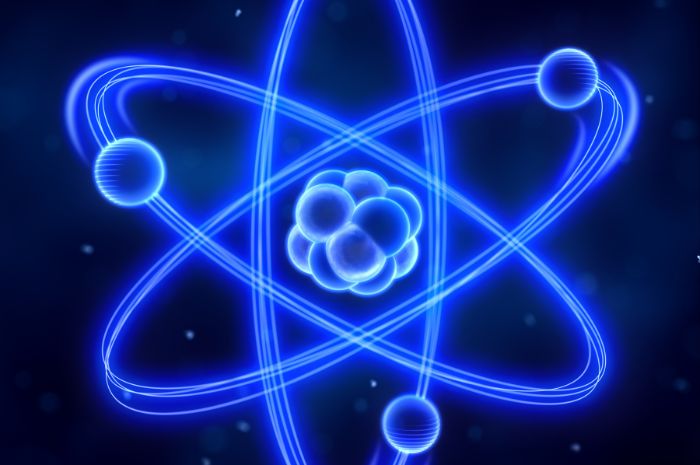
Again borrowed from an old greek word (A-tom, “not-split”) but experiencing vast advancement and change since then, atomic theory was first put forth in the classical physics era by John Dalton. It theorized that all matter is made up of atoms and that these atoms have different sizes and weights. This is the principle behind the periodic table of the elements that guides much of chemistry, and it also underwent much scrutiny in physics.
As more and more chemical elements were discovered and organized into the periodic table, many turned their studies not to how these elements reacted with each other (the focus of chemistry) but to what underlying principles caused their organization and governed the nature of their interactions. The timely arrival of a separate but related discovery was able to kickstart the study of atoms; Wilhelm Roentgen discovered beams of energy radiating off of certain materials or being emitted by certain electromagnetic processes. He called them x-rays—the x standing for the unknown source, although they radiated similarly to the electromagnetic waves discussed above and explained by Maxwell.

Shortly thereafter, Henri Becquerel and Marie Curie discovered new chemical elements that also were found to produce these x-rays—the first measurements of radioactivity. In several rapidly-developing experiments over just the next 15 years, the radioactivity of elements finally gave up the secrets of the interior lives of atoms, and it was not at all what was expected. JJ Thomson discovered the existence of the electron—a subatomic particle that carried an electrical charge and was responsible for almost all of the electrical phenomena discovered before.
Ernest Rutherford discovered that while most high-energy x-rays could pass through a thin sheet of foil, a small percentage would bounce back (he described his surprise as if he had fired a cannon shell at a sheet of tissue paper and it had bounced back and hit him!). His explanation was that the bulk of each atom’s mass was collected in its center (now called the nucleus), which was positively charged (in opposition to the electrons around it, and to the x-rays trying to pass through).
Further Discoveries by Max Planck
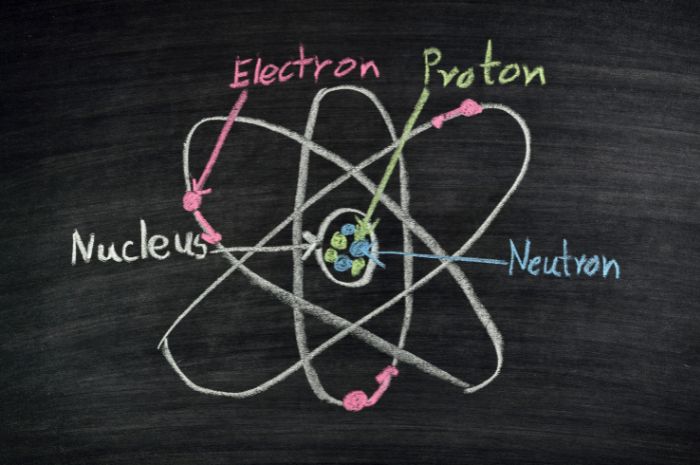
Max Planck discovered that the electrons around the nucleus could only exist at certain specific distances from the nucleus and that their arrangements at one distance or another had everything to do with where the element would fall on the periodic table. This tiny particle governed the organization of all the elements! This was also the beginning of understanding subatomic particles in terms of quanta—tiny but discrete individual quantities, rather than continuous properties. Not just any amount of electric charge is possible, only integer multiples of the charge of an electron (there are no atoms with half-electrons!) Not any specific amount of energy is able to be stored in an atom, but only integer multiples of the energies held by electrons at their specific distances.
Planck showed that the same thing applied to radiated energy—that it could only be emitted in discrete quantities. While others were unifying thermodynamics, electricity, and radiation through the theory of electromagnetic waves (radio waves, microwaves, infrared heat, visible light, ultraviolet waves, x-rays, and high-energy radiation called gamma waves are all just variations on the theme of electromagnetic waves), Planck was theorizing that electromagnetic energy could only be emitted in tiny packets called photons. So is light (or radio, or infrared, or gamma, or all the rest) a particle or a wave?
And while Planck was making everyone question whether things understood as waves should actually be understood as particles, Louis de Broglie went just the opposite way and demonstrated that electrons, if disturbed from atoms and emitted out into the universe, could interact and interfere with each other like sound waves making acoustic “dead spots” and “hot spots” in an auditorium. Particles that once were thought of as tiny “moons” orbiting the planetary “nucleus” or each atom were now behaving like waves! And finally, Enrico Fermi and others found ways to influence atoms to produce radiation, leading to the processes that now power nuclear reactors, the amount of energy available being governed by Einstein’s E = mc2 equation.
The Modern Physics Era
Now firmly in the modern physics era, radioactivity and atomic theory never really had a chance to exist in the classical physics era before they forced all previous assumptions to be questioned. Wolfgang Pauli proved that, based on Planck’s finding that electrons could only be at certain locations, this meant that no two electrons could be at the same place at the same time. In other words, you (who are made of atoms surrounded by electrons) have never actually touched or come fully into contact with anything else (which is also made of atoms surrounded by electrons)!
Even stranger is this: Equations governing waves, when applied to supposed particles like the electron, led Erwin Schrodinger to use mathematical analysis usually reserved for probability, implying that electrons and other subatomic particles don’t have a solid permanent existence like macro-sized objects that we observe in daily life. Rather, they have a probability—a chance of existing, at certain locations at certain times.
Noether’s Theorem of Symmetry
Speaking of certain locations, Werner Heisenberg pointed out that these probabilities imply limits to our knowledge of the universe. The very things that make us certain of where a particle might be will increase our uncertainty of how it is moving. Emma Noether concluded that this uncertainty applies to many pairs of properties and that for every pair of relatively uncertain properties, there is a corresponding symmetry to the universe. Not symmetry in the sense of simple mirror images all around the universe, but symmetry in the sense of matching.
Just as you can switch which side of someone’s face you’re looking at, but you’ll still see an eye, a nostril, or an ear, you can switch what time you do a physics experiment and you’ll still get the same result. You can switch which location you do a physics experiment and still get the same results. This is Noether’s theorem of symmetry. Physics laws obey symmetry of location, symmetry of time, and other symmetries. These lately-discovered principles match, once again, with an assumption that our universe is created by a God who is the same yesterday, today, and forever, and who exists at all places. His creation obeys laws that also have these same features.
The Limits of Symmetries
Unfortunately, while these symmetries are comforting in knowing that Creation obeys reasonable and unchangeable laws, they again put limits on how much we can know about those laws. If a physics experiment will produce the same result no matter what time you do it, there is no experiment you can do to prove what time it is! There are plenty of time-measuring systems that are relative to other things, but no absolute time scale for the universe.
Likewise, while we can consider the earth to be our home planet and frame of reference, symmetry of location means that the laws of physics work just as well anywhere else and thus can’t define one special place that is the center of the physics universe. This means that we need to contend with the idea of relativity—how to account for all the laws of physics relative to our perspective and how it relates to the perspectives of others if there is no universal standard to measure the laws of physics. Potentially God himself has a single objective standard view of the whole universe, but it is not available to us, so we need laws of physics that account for this.
Albert Einstein…Again!

And here comes Albert Einstein again, the Isaac Newton of the modern physics era, to shepherd our understanding of this new perspective. In 1905, he wrote four papers:
- Expounded on E = mc2.
- Explained a phenomenon where light is turned into electricity.
- Calculated the size and mass of atoms based on the random motions of grass seeds floating on a bucket of water.
- Addressed the topic of relativity (later developed into a more generalized theory).
His theory of relativity is actually a final development in the study of light, bringing it firmly into the modern physics realm as part of yet another thread. His theory followed surprising results from experiments by Albert Michelson and Edward Morley that demonstrated something more important through its failure than it ever could have through success. Their experiment set out to find the material through which light travels the vast distances between stars (electromagnetic waves like all others should need a medium to travel through), by measuring the relative speeds of two beams of light traveling in perpendicular directions (one dependent on Earth’s movement through this supposed material, and the other independent of Earth’s motion).
The experiment showed no difference between these two beams of light, meaning that the beams of light were not moving through any material that Earth was also moving through and that the speed of light was constant regardless of the movement of its source and the detector used to measure it. This led directly to Einstein’s theories (proposed in his 1905 paper) that light itself was the only constant in the universe, and that every other observation (even measurements of time itself) would prove to be relative to observers and their motion, but the speed of light would remain constant.
Let There Be Light
The fundamental importance of light will again be no surprise to those who read the Bible and find that it is the first thing that God creates when He brings the physical universe into being, but the measurable implications of that truth are still being felt. They have basically put light at the same fundamental level as gravity when it comes to being tied to the very structure of our universe.
All of Noether’s other symmetries can be unified around this central constancy of light. In 1915, Einstein’s general theory of relativity expanded on this idea, showing that there is no absolute measurement of speed-only relative motion, with the speed of light as the one constant. It also revealed that quantities like force, energy, and even the passage of time are not absolute, but depend on the observer’s frame of reference.
Special Relativity
Okay, so you’re standing in an elevator at rest on the ground floor. Step on a scale and measure your weight, drop a ball and see how long it takes to fall, or jump and see how high you can go. Now the elevator starts being pulled upwards by a cable, getting faster and faster as it rises. The scale under your feet will read a higher measurement because it’s being pressed against your feet harder. The ball you drop will reach the floor sooner than you expect (because the floor is rushing up to meet it). If you jump you won’t get as close to the ceiling as you did before (because the ceiling is rushing away from you).
But now imagine the elevator is back at rest on the ground floor, but gravity is stronger (we moved the elevator to the ground floor of Jupiter, perhaps). The scale under your feet with read a higher measurement because you’re being pressed down harder against it. The ball you drop will reach the floor sooner because it’s being pulled by a stronger gravity. When you jump, you won’t get as close to the ceiling because you’re fighting against a stronger gravity.
Since the two sets of experiments produce identical results, you can never tell whether your elevator is being accelerated upwards or whether you’re experiencing a stronger pull of gravity downward.
Special Relativity vs. General Relativity
Special relativity only applies to situations where motion is constant, not accelerating, and not affected by outside forces. General relativity now says that everything is relative even in cases where you think a force or acceleration is being applied because those two explanations are interchangeable (relative) to each other.
Well, special relativity is how we know that light is fundamental to the structure of the universe. General relativity is how we know that gravity is fundamental to the structure of the universe. Or rather, general relativity is how Einstein proposed his alternate theory of gravity—the warping of spacetime instead of Newton’s attractive force. This alternate theory of gravity is what is part of the fundamental structure of the universe.
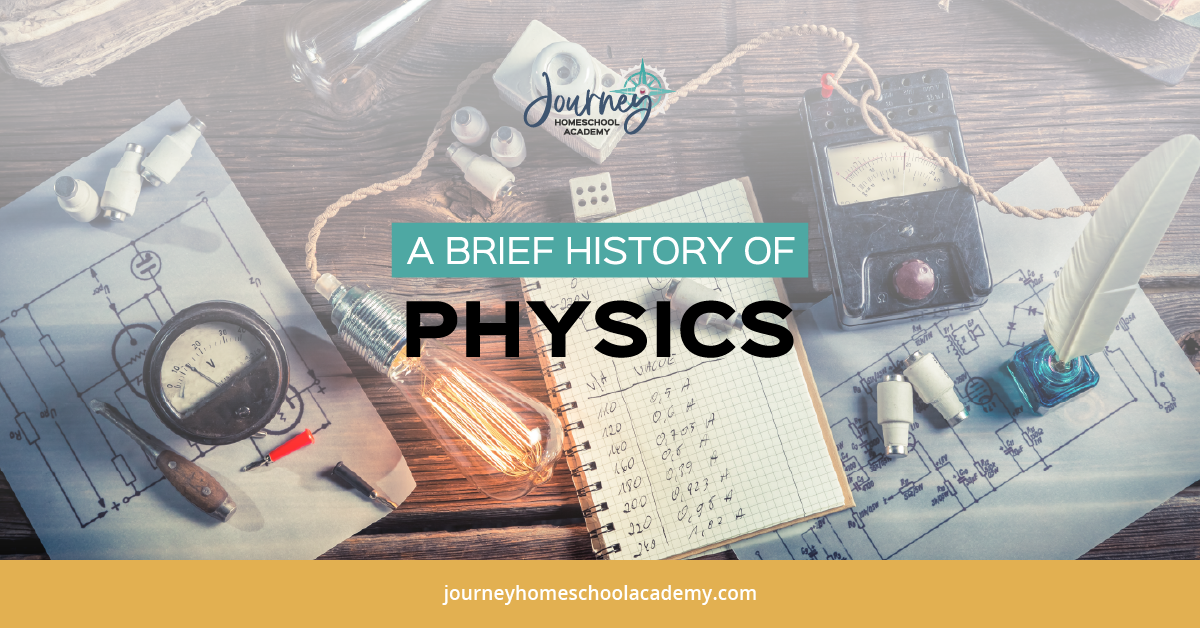
The Incredible World of Physics
The grand sweep of history in the last 500 years, from the Reformation and Renaissance to the modern day, has led to many practical advancements in the study of astronomy, gravity, light, electricity, heat, atoms, and radiation, but it has led to even more vast theoretical advances. Isaac Newton was the key figure in the classical realm, unifying many ideas that came before and creating mathematical models that are still used today.
In the modern era, all roads go through Albert Einstein, whose brilliant insights led to new rigorous mathematical models, some of which updated or replaced classical Newtonian models, others of which exposed new undiscovered principles that are still being worked out to this day.
One hundred and fifty years ago, physicists believed that they had all the theories down and just needed to make more detailed measurements and more useful inventions. Now, the grand result is that we know that there are vast secrets still held in the very tiniest atoms, the very farthest reaches of space, and everywhere in between.
Nature is indeed made by an infinitely incomprehensible God, and we will never lack for curiosity, discovery, and wonder as we pursue Truth in His Creation!
